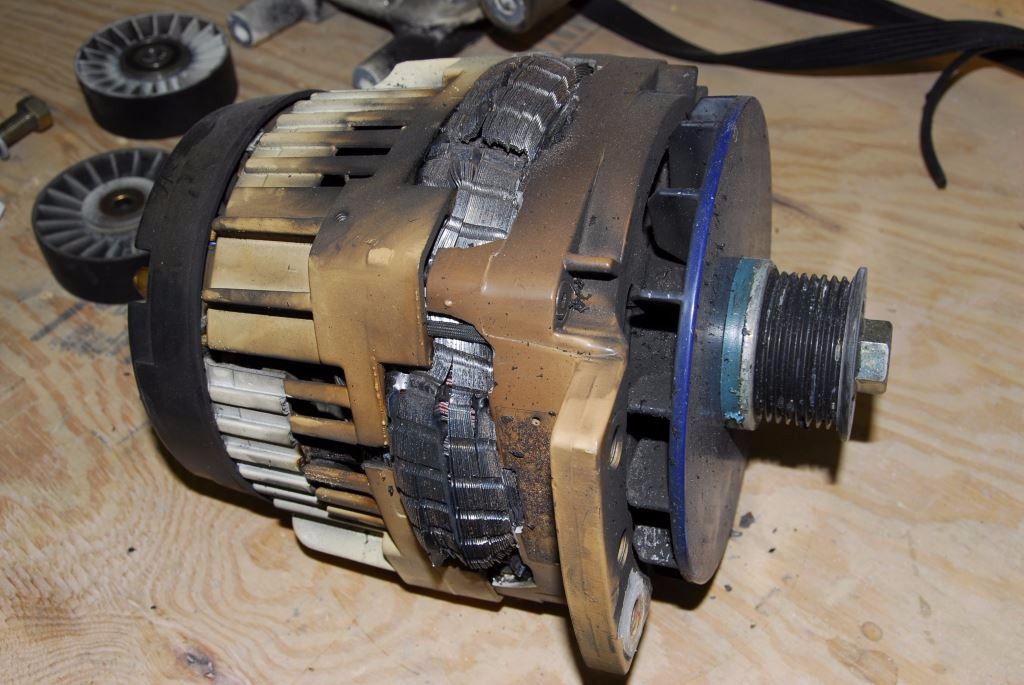Text and photos by Steve D’Antonio
Copyright © 2017
From the Masthead
Apprenticeships Revisited
Readers of this column know that I’m passionate about marine industry professionalism and expertise, an integral part of which involves vocational training and apprenticeship programs. I’ve written about these programs in other countries, notably Australia, and have lamented the dearth of such options within the American marine industry (as well as other technical trades). According to the labor department, nine out of 10 Americans who complete apprentice training find a job with a starting salary of $60,000 a year. An article in a recent issue of ‘Soundings Trade Only’, a marine industry journal, details the latest efforts by the Trump Administration to expand and enhance vocational and apprenticeship opportunities in this country. I welcome and applaud this effort, which sends a clear message, not only is college not for everyone, there is a clear need, and respect, for those with a technical rather than academic education, and the need for skilled, well-trained and experienced professionals within this industry has never been greater. Boat builders, dealerships and boat yards have been clamoring for skilled staff since the recession ended, and they report the employment gap grows with each passing month. When I managed a Virginia-based boat yard, my greatest challenge involved the pursuit of skilled professionals; ultimately forcing us to recruit nationwide. That was ten or more years ago. With each passing year propulsion and onboard mechanical and electrical systems become increasingly complex, driving up demand for those who have the skills to install, maintain, troubleshoot and repair them. I will continue to watch, write about, promote and report on this trend.

Nikita cruises before a waterfall, in what is acknowledged as one of Norway’s most picturesque regions, Geirangerfjord.
Cruising Technology
I recently completed an 18-day passage aboard a Fleming 75 in Norway. The vessel proved as interesting to me as the breathtaking Scandinavian scenery. A 2004 model, Nikita recently underwent a lengthy refit, during which, among other things, she received a new navigation and communication suite, a Maretron monitoring system, and lithium ion battery bank. The latter was of particular interest to me. Thanks to, among other attributes, their light weight, dense capacity footprint, and rapid recharge time, lithium ion batteries, now common place in automobiles, hold great promise for marine cruising vessel house battery banks. In the last couple of years, and thanks to early adopters, they have progressed from bleeding to cutting edge technology. Spending time aboard this vessel allowed me to carefully evaluate both the installation and performance of this system. While there remain a series of caveats for their use, I’m pleased to report that the results from this vessel were very encouraging. I’ll cover the details in an upcoming article.
This month’s eMagazine feature article covers the subject of advanced battery charging and alternator regulators. I hope you find it both interesting and useful.
Alternator Regulation
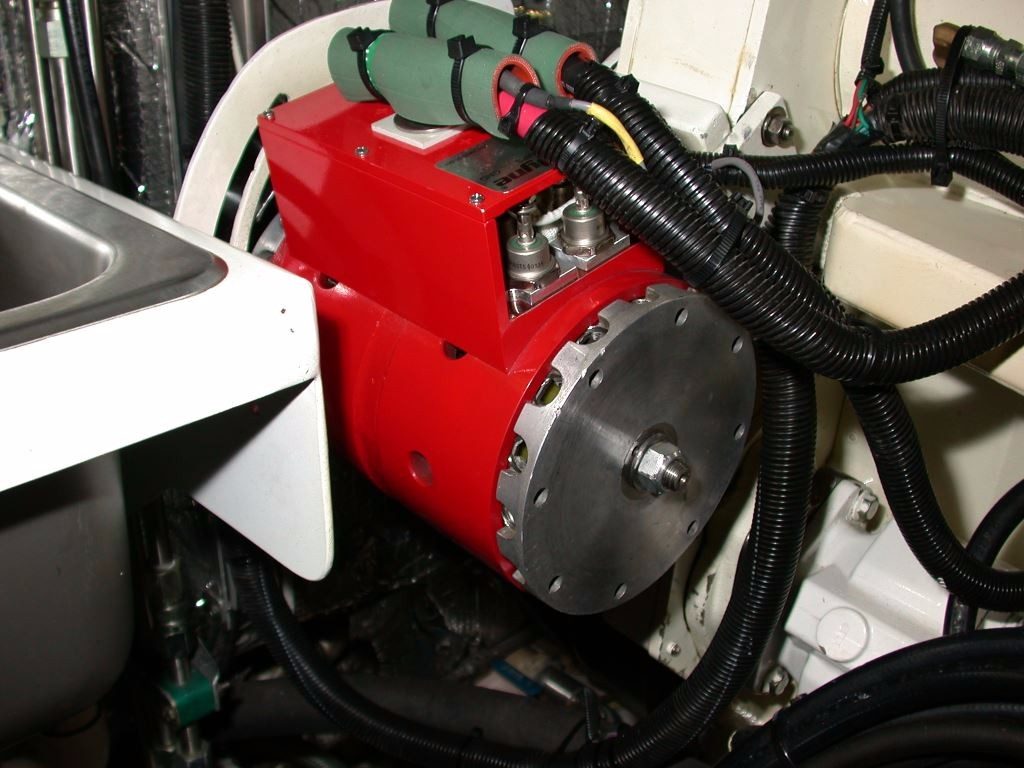
Without properly designed and installed advanced regulation, high output alternators will be unable to effectively, safely and rapidly charge large house battery banks.
A few years ago I inspected a new, and finely-crafted 57 foot single screw cruising vessel, whose 12 volt (by all rights the vessel should have been 24 volt, but that’s another story) house battery bank possessed over 1000 amp hours of capacity (an amp hour is the typical unit of measure for deep cycle batteries and large battery banks, one amp hour represents the usage of one ampere for one hour, while ten amperes of usage for four hours equals forty amp hours and so on). Just a few years ago this would have been considered a huge battery bank, however, by today’s onboard electrical standards it’s moderately-sized for a serious cruising vessel.
The owners’ complaint was a refrain I’ve been hearing for most of my nearly three decade-long professional career; “The battery bank isn’t big enough”. Although I suspected I knew why this cruising couple was saying this, I inquired as to why they believed this to be so. The response, “the batteries aren’t lasting long enough between charging cycles, in the morning the batteries are nearly dead”, confirmed my suspicion. Indeed, the battery bank required all too frequent re-charging, but not because it was undersized (if anything it was over-sized when compared to the charge capacity). The problems lie in the method(s) of charging.
The vessel was equipped with a stock alternator supplied by the engine manufacturer, with a 100 amp capacity. While this may seem like a lot at face value, it’s woefully undersized for the task. Furthermore, because the alternator was internally regulated, as nearly every stock unit is, it was incapable of recharging a large house battery bank with any degree of efficiency.
Alternators, Not all are Created Equal
It’s important to note that most marine engines are industrial blocks that are marinized; they are destined for trucks and other industrial applications where the primary requirement of their alternator is to recharge a starting battery whose amp-hour capacity is often something less than 100 amp hours. Most marine engine manufacturers follow a similar regimen, the alternator is designed to charge the engine’s own starting battery, as well as supplying power for pre and post heat systems (this is why more and more diesel engines are equipped with seemingly large alternators, as the heating elements are exceptionally power hungry, albeit for a short duration), instrumentation, electronic engine control if so equipped etc. The average engine start cycle requires less than one amp hour, thus replacing it requires very little effort or time on the part of a stock alternator.
Insidiously, some stock alternators are deceiving in that their output is seemingly high, as in the case of the aforementioned cruiser, offering a hundred or a hundred and fifty amps. The problem with these alternators is two-fold. First, they are internally regulated and therefore not equipped to deliver the multi-stage charge required by deep cycle house batteries. Second, with few exceptions they are not designed to deliver their full output except for short periods of time. When called upon to do so, by retrofitting one of these alternators with an external regulator as is sometimes done, they often expire prematurely as a result of overheating.
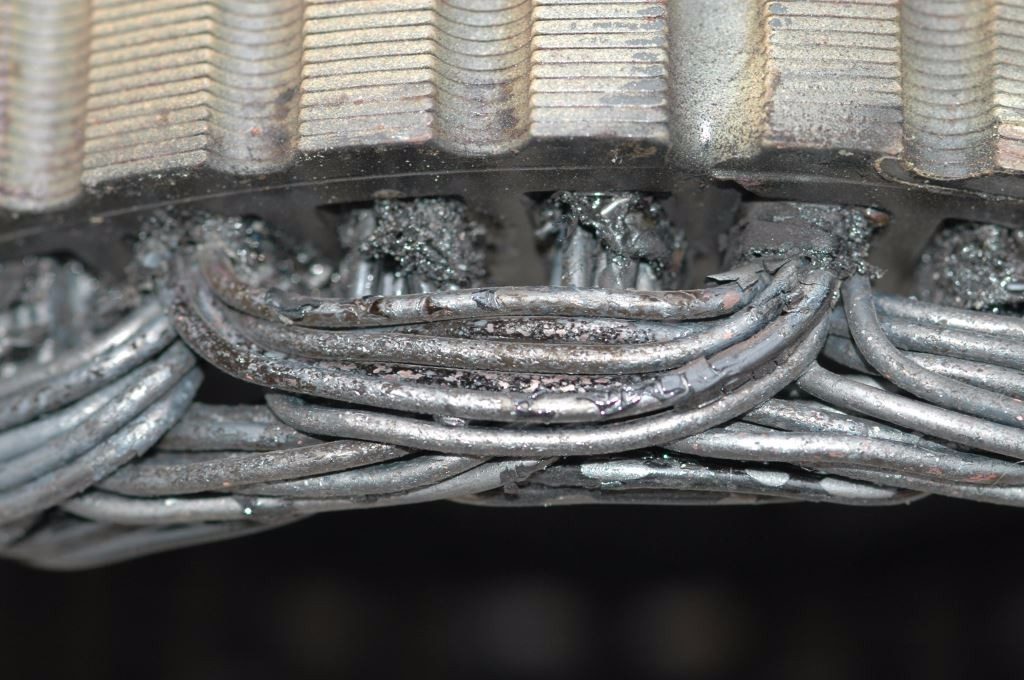
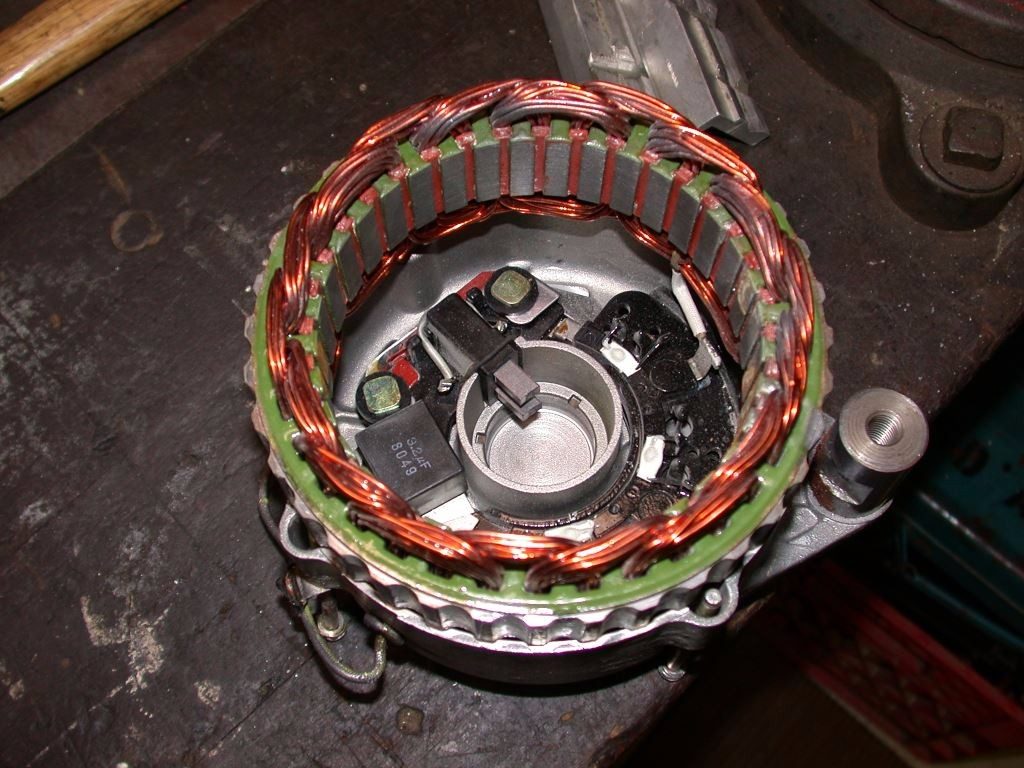
Because they are unable to dissipate heat, most stock alternators supplied with engines are not designed to be externally regulated, regardless of output rating. A healthy stock alternator’s lacquered copper windings (above) remain bright and shiny, while the windings of an over-heated stock alternator (top), one that was externally regulated, show clear signs of heat stress, wherein the lacquer coating has been vaporized.
The difference between a near-continuous duty high output alternator and a high output stock alternator is, to paraphrase Mark Twain, like the difference between lightning and a lightning bug. The trouble, however, doesn’t end here. Not only is the stock alternator not equal to the task it’s being called upon to carry out, even when externally regulated, its output, contrary to initial perceptions, is simply inadequate. While 100 amps may appear substantial, it’s anything but when compared to the massive bulk of many of today’s house battery banks. In the case of the 57-foot cruiser, it’s a mere 10% and even if it was a proprietary, continuous duty high output alternator it still would be inadequate.
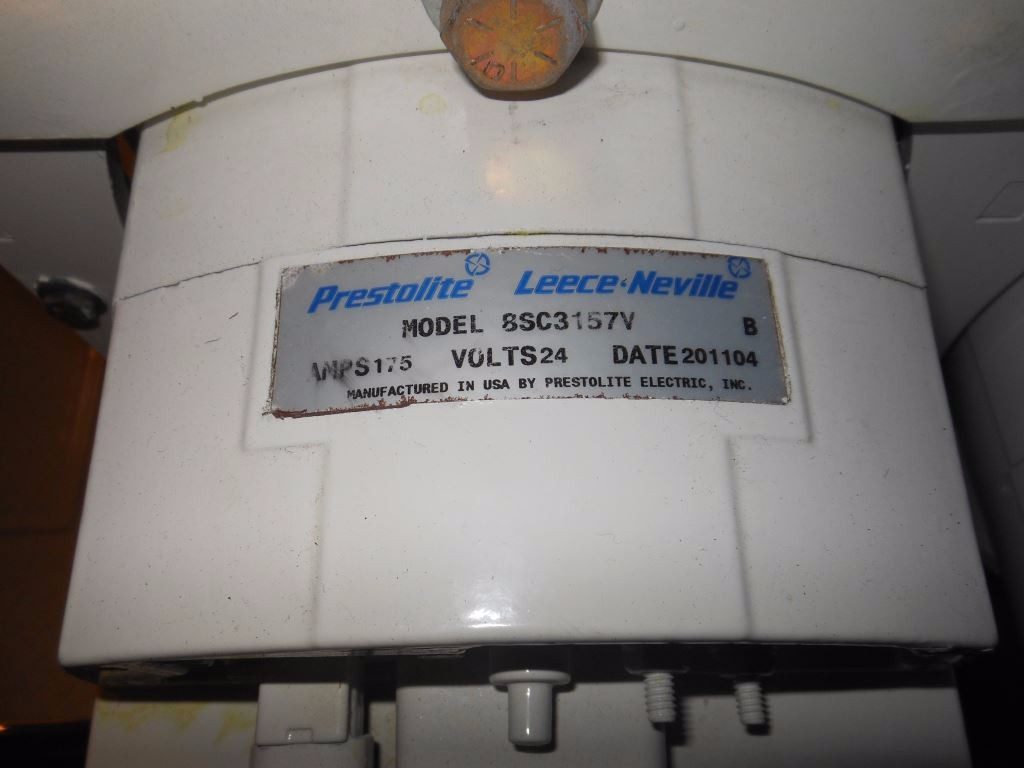
A handful of stock, off the shelf high output alternators are capable of being externally regulated. This Leece Neville/Prestolite model is one example, it produces 175 amps at 24 volts.
Depending upon the battery type, flooded, gel or AGM, the rule of thumb for the ratio of charge output to battery bank size calls for the charge source, an alternator(s) in this case, to be a minimum of 25% of the bank’s amp hour capacity (gel batteries can initially accept 50% of their amp-hour capacity, while AGMs can accept 100% and in some cases more, flooded batteries are limited to 25%, hence the 25% rule of thumb). That is, the alternator output required for this battery bank, in order to achieve reasonable re-charge times, should be at least 250 amps. Continuous duty alternators of this capacity are available, however, they are not inexpensive and their installation requires careful engineering and often fabrication of heavy duty brackets. Custom pulleys may also be required to fine tune the alternator’s speed (alternators have a sweet spot, where they generate maximum current while providing adequate cooling from their built in fans; all alternators have a “red line”, a maximum allowable rpm which must not be exceeded) to achieve maximum output at the vessel’s cruising speed.
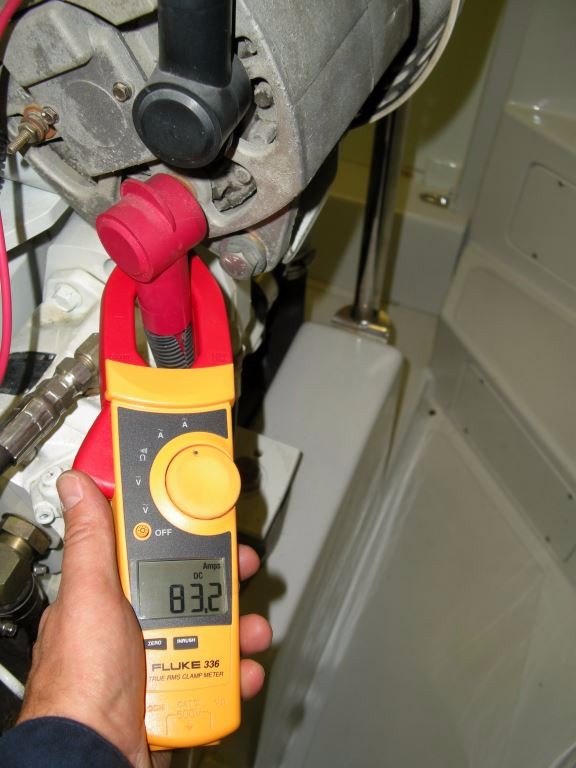
Not all high output alternators are designed to supply current for an extended duration, to do so they must be able to effectively dissipate internally-generated heat. Those that are not designed for the task are destined for an early grave.
In some cases, two alternators (either on a single engine or one each on a twin screw application) may be required to achieve the required output. When dual alternators are used simultaneously, both outputs should be connected directly to the house battery bank, and they must be synchronized so they behave as a single alternator.
After my inspection of the 57-foot cruiser I recommended that the stock alternator be replaced by a continuous duty 200 amp unit (the largest that could be accommodated by this engine’s mounting design without significant modifications) along with a multi-stage, temperature-compensated regulator and a battery bank amp-hour monitor, which would enable the owner to accurately determine how many amp-hours had been used by the bank, which in turn would dictate their re-charge cycle. Additionally, when at anchor the only charge source was an inverter charger whose charge capacity was 110 amps. Again, while that may sound like a lot, it’s simply not enough for recharging 50% (common wisdom holds that conventional batteries, flooded, AGM and gel, should not be discharged more than 50%, doing so will diminish the total number of amp-hours derived from the bank over its life) of this bank’s capacity, at least not in a reasonable time period. This was augmented with two additional 100 amp chargers, for a total of 310 amps during the bulk charge phase. Because the bank was made up of AGM batteries, in theory it could have supported three times this amount of charge capacity.
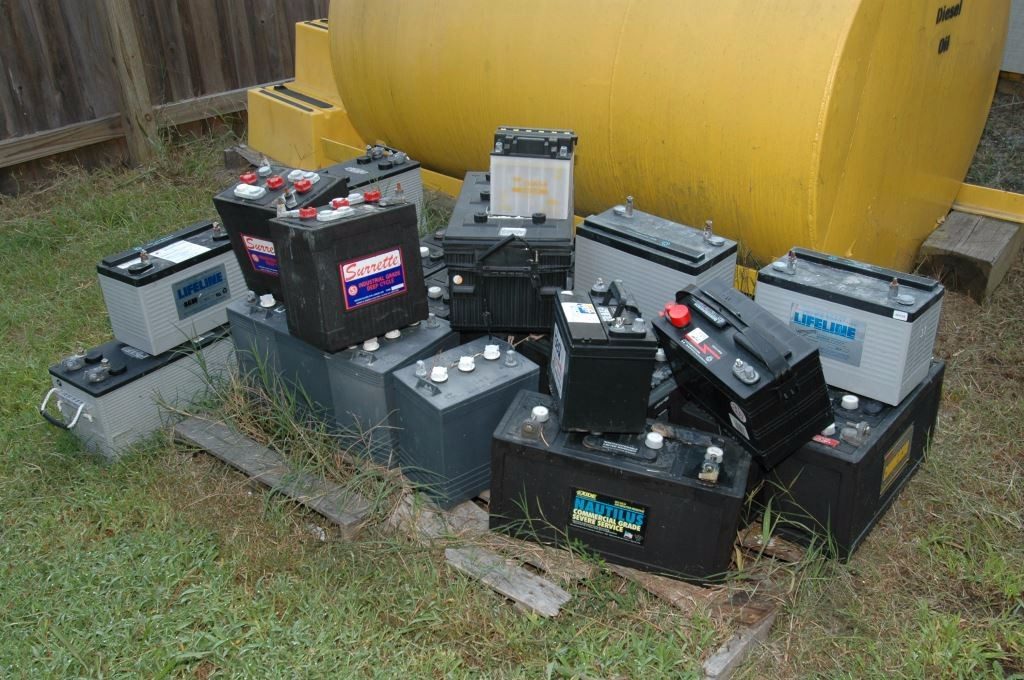
The vast majority of batteries, particularly sealed valve regulated versions, AGMs and gels, suffer an early death thanks to improper charging regimens.
With this gear in place, as well as a little training regarding battery bank monitoring and discharge protocols, the perceived need for a larger battery bank evaporated.
Although the error was no doubt unintentional, the builder of this vessel never should have installed a mega-battery bank knowing it would be serviced by a mini-charge source. Battery banks, particularly large ones, must always be treated as an integrated package whose design is based on the electrical needs of the vessel/crew, the desired quiet ship time, and the charge source. Failure to treat each leg of this battery triangle equally nearly always results in a system that fails to live up to expectations.
Alternator Regulators
While the integration of this system is vitally important to its efficient operation, there are a variety of details and ancillary items that must also be considered. Among the most important are the methods by which the alternator or alternators are regulated.
As mentioned above, all alternators are not created equal. Most are designed for short duration high output scenarios, to recharge a start battery or perhaps to supply power to an air intake post heating system for the purposes of reducing smoke upon start up. The solution is to utilize an alternator that’s designed for extended high output operation. That, however, is only half of the high output charging equation. Alternators of this variety are long on brawn and short on brains. While exceptionally robust and capable of delivering amps galore, they typically lack regulation of their own and proper regulation is especially important when it comes to recharging a large battery bank as quickly and as safely as possible.
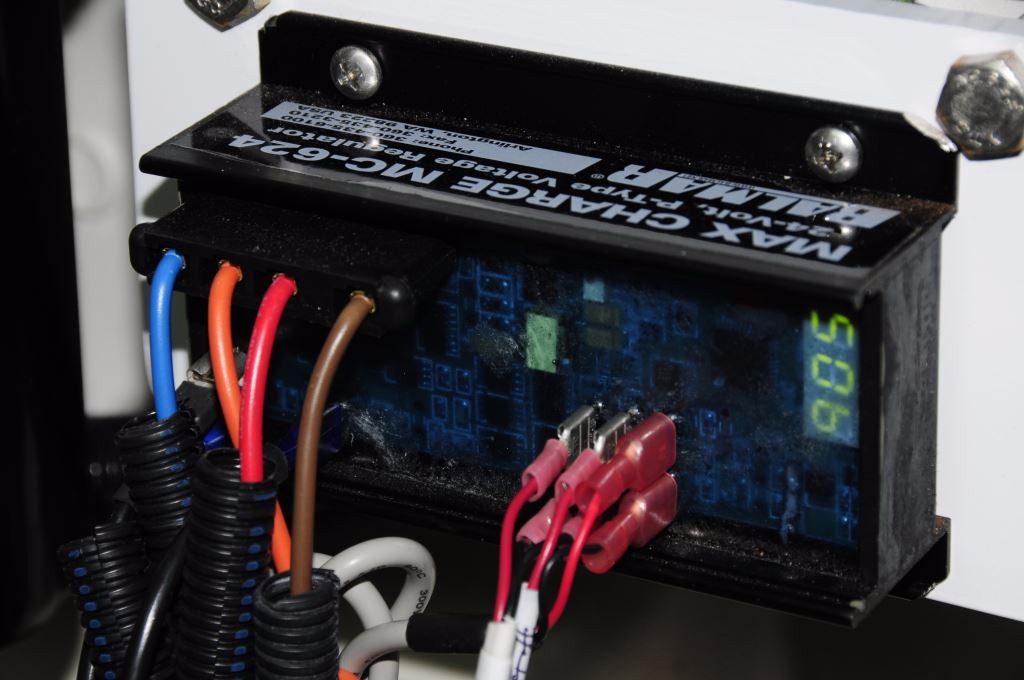
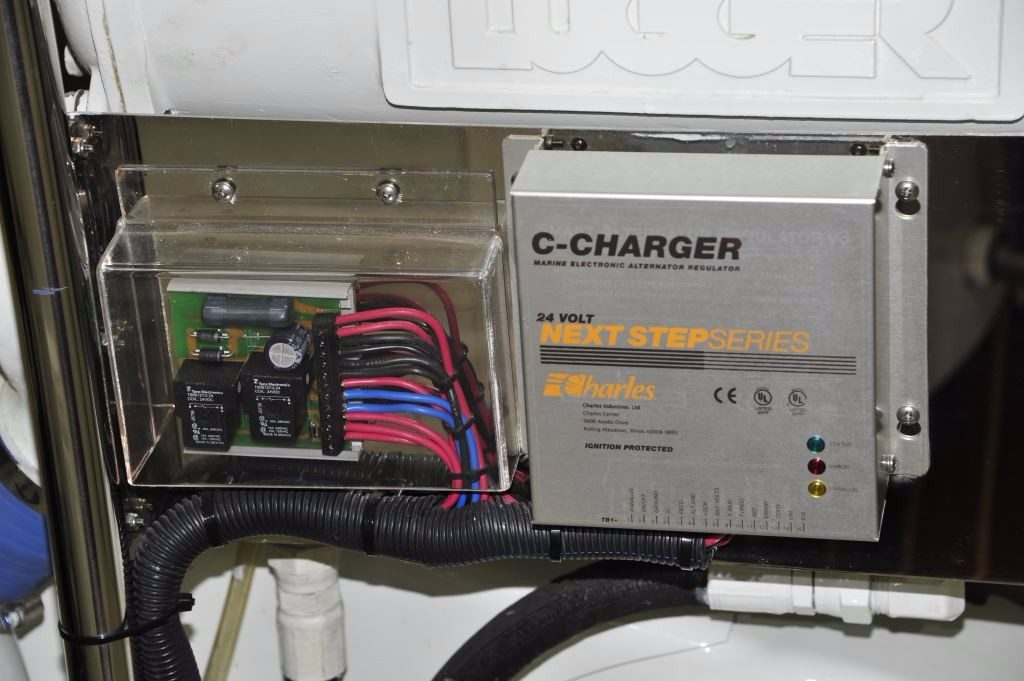
Smart, three stage, temperature-compensated regulators are the heart of a high output charging system and large battery bank. Without them, most stock alternators tend to under or over-charge the banks they serve.
The internal regulator supplied with most stock alternators has a reliable but unsophisticated charge profile or voltage range. In spite of the alternator’s rated output, when guided by such a regulator, it’s simply not capable of replacing large amounts of energy that have been drawn from a heavily depleted house battery bank, or doing so in a manner that ensures the longest possible battery life. When called upon to do so, after an initial high output, it often tapers back to a modest charge rate. The results are twofold. One, the battery bank becomes chronically undercharged and two, the voltage that the batteries are exposed to is often incorrect, which leads to poor performance and a shortened lifespan.
Fortunately, the solution to the problem is straightforward enough. In addition to correctly sizing a proprietary high output alternator for the battery bank that is or will be installed, it must be controlled by an external multi-stage “smart” regulator. Smart external regulators have been available to the marine industry for many years, I installed my first 25 years ago, and even the earliest models represented a vast improvement over what were hitherto available, internal regulators, the vast majority of which weren’t even adjustable. External regulators pair precision control with a high output alternator’s brute force, offering the user the best of both worlds.
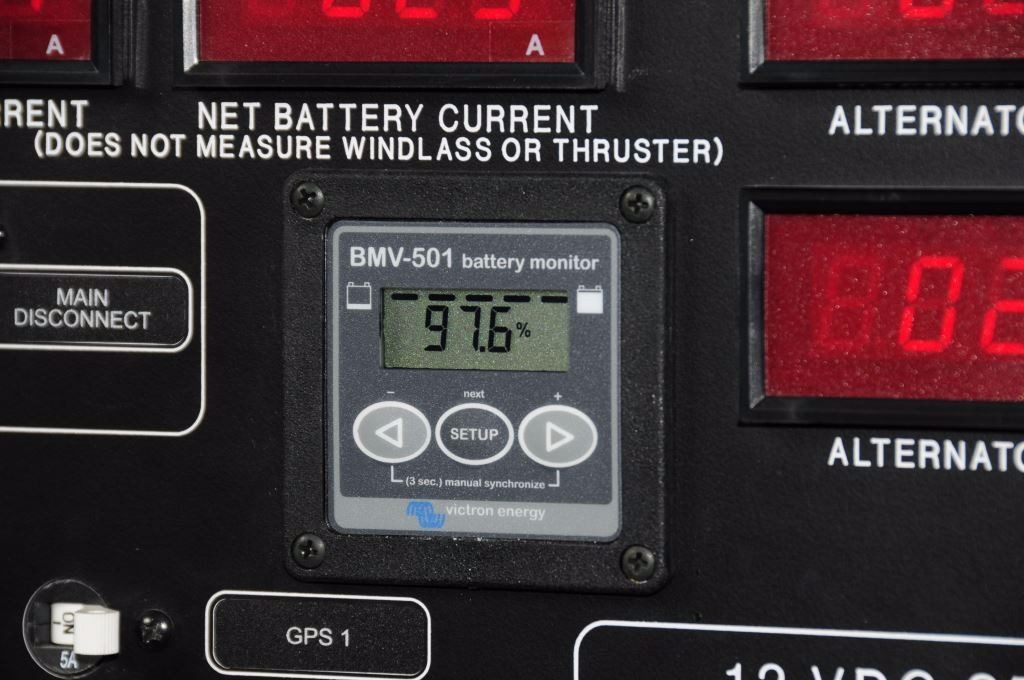
The owner of the most advanced high output charging system is flying blind unless he or she is able to monitor the battery bank’s state of charge, using an amp-hour meter like the one shown here. Amp-hour meters are every bit as critical to these systems as multi-stage regulation.
The key to effective management of alternator output is to supply it in distinct stages, bulk, which is typically between 14.1 and 14.6 volts, 28.2 and 29.2 for 24 volt systems, acceptance or absorption, usually 2/10 of a volt below bulk, and float, which is typically one volt below bulk. Each battery type has its own ideal charge profile, for which most smart regulators can be programmed.
Batteries are able to accept different charge rates as a function of their internal resistance, which in turn is a function of their state of charge or SOC. Heavily discharged batteries have low resistance, and can therefore accept higher current, while nearly fully charged batteries possess high resistance, and therefore accept current more slowly. This is why replacing the final 10%-15% of a battery’s charge can be a very slow process; internal resistance is high, thereby limiting the charge acceptance rate.
When compared to their conventional brethren, smart regulators are much better able to determine, and take advantage of, these states of charge, tailoring the alternator’s output for the greatest charge efficiency, and thereby ensuring the shortest possible recharge time.
Bulk is, as the name implies, the highest output stage of the alternator/regulator. It sends a heavily depleted battery bank the greatest possible amperage that it can safely accept (send too much and it will cause the battery to overheat and possibly catch fire). As the bank’s state of charge increases, the regulator switches to acceptance mode, which is essentially a throttled back charge rate, held at a constant voltage. Finally, once the battery is fully charged the regulator enters a float mode, keeping the battery bank’s voltage high enough to prevent self-discharge and sulfation (an accumulation of energy-robbing sulfate crystals on the batteries’ plates) and low enough to prevent overcharging.
I don’t believe it would be an overstatement to suggest that multi-step charging protocols have been to large house battery banks what fiberglass resin has been to boat building. Without this approach, using large battery banks and recharging them in a reasonable amount of time would be virtually impossible. Absent this level of charge efficiency, convenience and functionality the plethora of DC gear that’s become an integral part of the modern cruising vessel would be impractical.
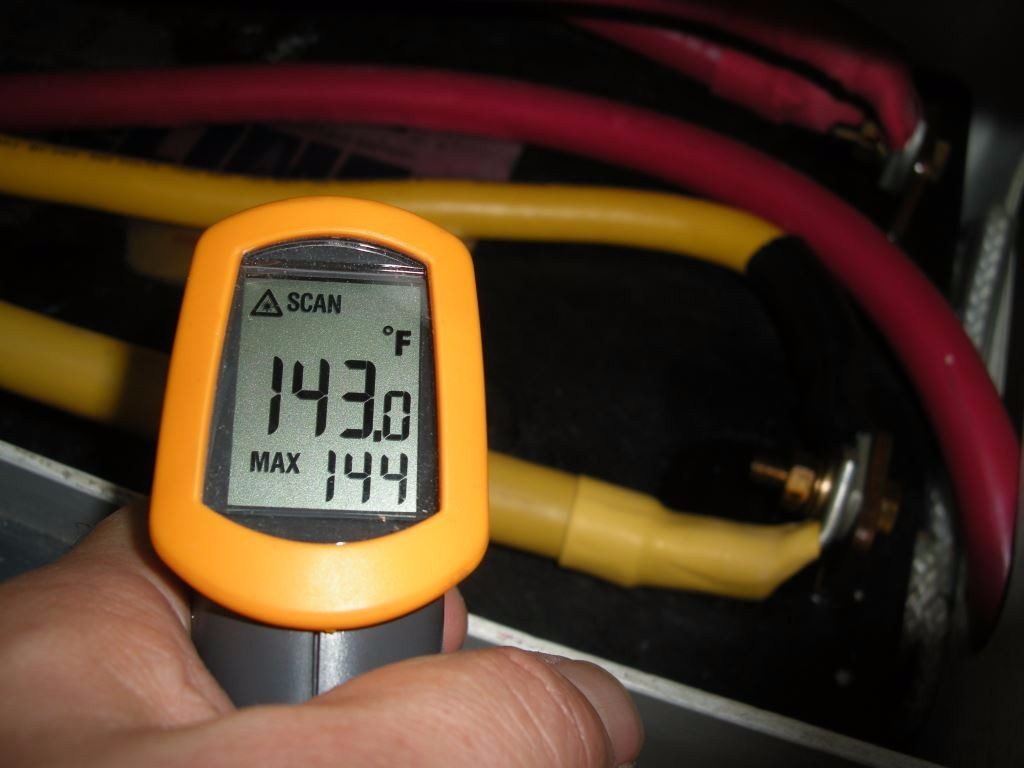

Temperature-compensation plays a critical role in high output charging systems; it should be considered a prerequisite in any high output alternator or shore charger installation.
Although deemed optional by some, temperature compensation is, in my opinion, an indispensable part of any multi-step smart regulator system. Because batteries are capable of accepting a higher voltage when cold and consequently incapable of safely accepting the same voltage when hot, temperature compensation plays a vital role in establishing battery charging parameters and increasing longevity. Simply put, temperature compensation is a must for any multi-stage charging system, whether derived from an alternator or shore-powered charger-inverter/charger.
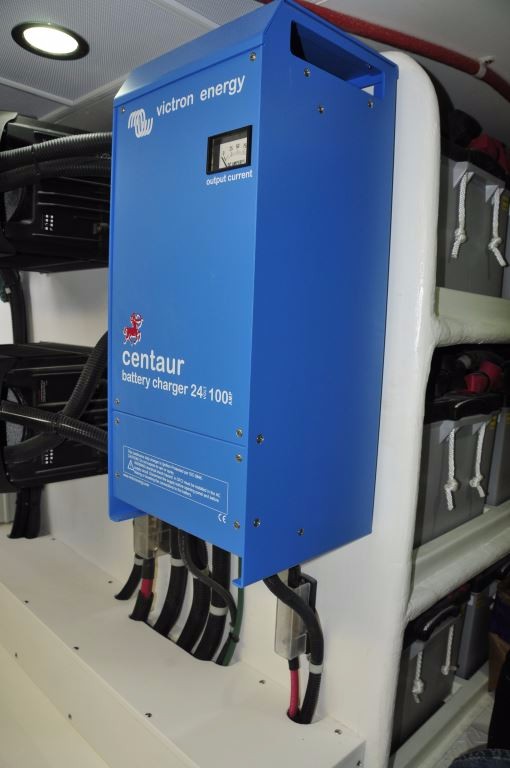
Shore or generator-powered chargers play an equally important role in properly charging large battery banks when the vessel is not underway. Inadequately-sized systems lead to extended generator run time, with the nuisance, additional maintenance and maladies that accompany it.
I recently inspected a battery bank that was (wisely) located in the lazarette as the vessel cruised the Bellingham Channel, where the water temperature was a chilly 53°F. The charge rate was noticeably higher than, say a vessel I inspected the previous month, it was located in the Bahamas, the water temperature was 75°F, and its batteries were stationed in the engine room. The temperature compensation probe enables batteries living in vastly different environments such as these to be charged safely, efficiently and quickly (or as quickly as possible) while ensuring maximum battery longevity.
Typically, the probe is adhered to the battery case, or bolted to one of the battery terminals in the house bank (the stick-on probes are notorious for falling off, I usually apply a bead of silicone sealant over them to keep them in place. It’s important that the probe be installed on the house rather than the start bank, as the house bank will be heavily discharged and cycling and it’s the bank to which the alternators’ output should be directly connected. If the house bank is split between two locations, which is undesirable, the temperature probe should be installed in the location that is anticipated to be hottest, the engine room rather than the lazarette for instance.
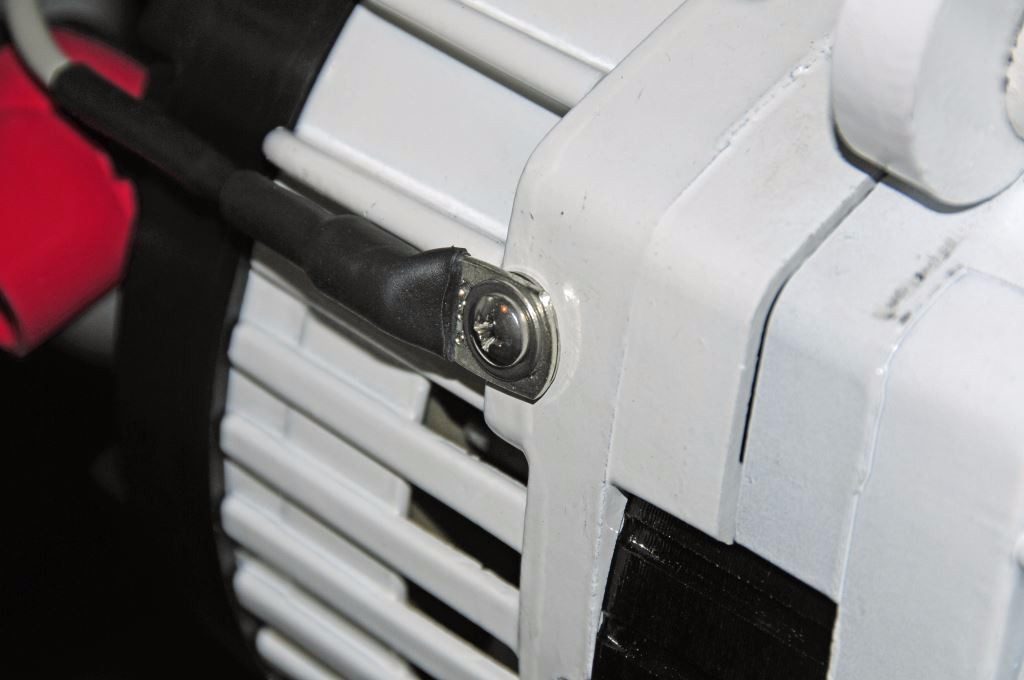
Temperature compensation doesn’t stop at the batteries, alternators also benefit from this feature. This temperature probe will alert the regulator to an impending overheat scenario, at which point the regulator will reduce the load placed on the alternator.
For vessels equipped with twin propulsion engines, the preferred approach, for maximum charge capacity, calls for the installation of one high output alternator on each engine with, once again, both outputs connected to the house battery bank. In order to operate properly, however, they must be synchronized using a device that will enable them to act in concert rather than in opposition. If separate, unsynchronized regulators are used, one of a twin independent alternator set up will often prevail, leaving the other in idle mode, essentially nullifying the value of a twin arrangement.
Some regulators are capable of simultaneously controlling the output of two alternators. Taking this approach ensures the alternators will always work in concert. An intervening device may be, but is not always, required, check with the manufacturer of your regulator. Provisions must be made to disable the field voltage to an engine/alternator that is not running, this may be done automatically, using the aforementioned synchronizing device, or via a manual, or oil pressure actuated, switch. By the same token, twin high output alternators installed on the same engine also benefit from being controlled by a single regulator.
Depending upon their sophistication, and cost, regulators may encompass additional valuable features. These include start delay, which gives the engine and belts time to warm up before applying alternator load, as well as preventing the alternator from placing a load on a smaller engine during cranking. A remote battery sense enables the regulator to measure and compensate for the battery bank’s actual voltage, thereby taking into account voltage drop between the battery bank and alternator. The value of battery temperature sensing has already been mentioned, however, the same approach can be used for the alternator itself. By sensing its case temperature, the regulator can reduce the load on the alternator if it becomes too hot. Finally, a belt management program enables the user to intentionally de-rate an alternator’s output, thereby reducing the load on the alternator and engine crankshaft pulley. This can be especially useful in small engine applications, where crankshaft as well as belt loads must be managed, or where, for longevity purposes, over-sized alternators are used, a 400 amp alternator for instance, being limited to 250 amps will run cooler and last longer than a 250 amp alternator running without limitation.
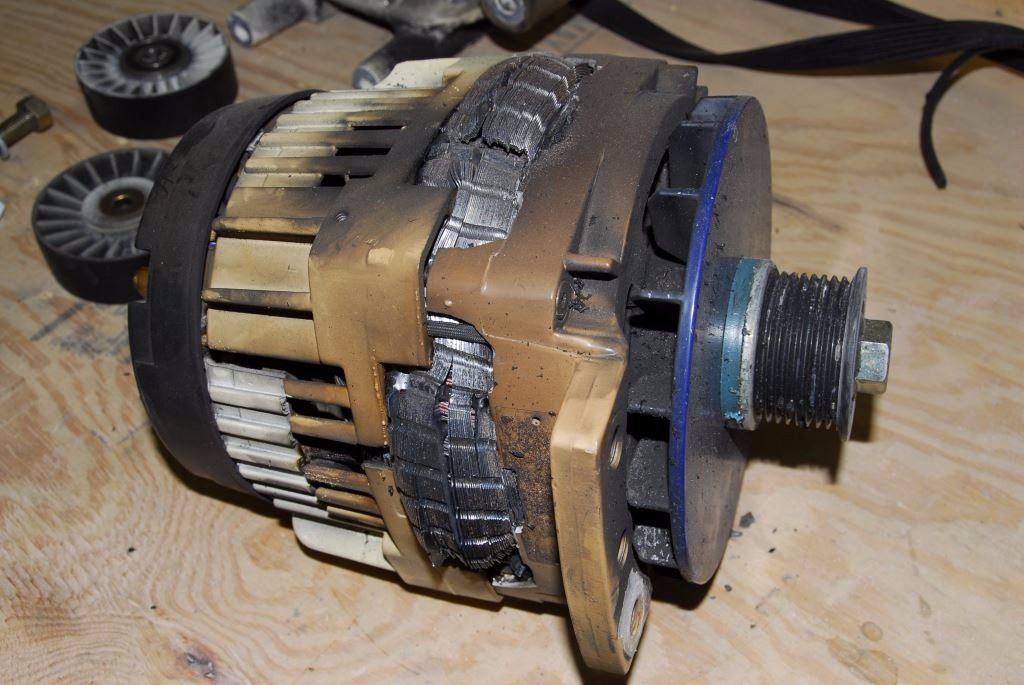
All alternators are designed to produce maximum output within a specified rpm. Ideally, the alternator will reach this sweet spot at the vessel’s cruising speed. Too much of a good thing can be problematic, however, as over-speeding an alternator will result in its self-destruction, pulley seizure, and engine stoppage. Make certain you, or your electrician, do the pulley math before proceeding with a high output alternator installation. This installer failed to ‘do the math’, causing the alternator to overheat and seize.
Advanced alternator regulation is now well-understood, there’s no reason not to take advantage of it; where large battery banks are concerned, regardless of whether they are flooded, gel or AGM, it’s a veritable prerequisite.

